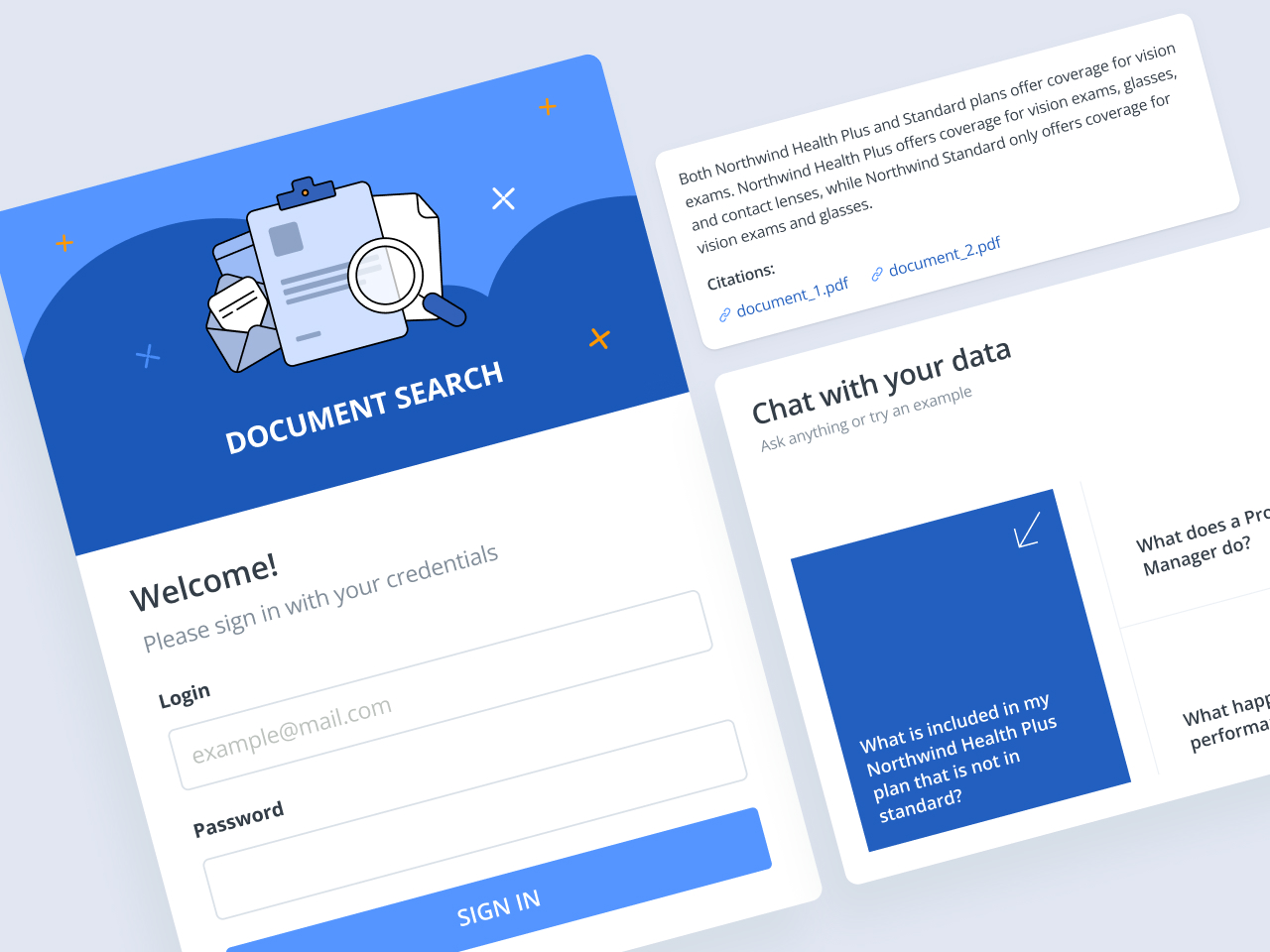Emerline has developed an innovative AI-powered chatbot document search service tailored for B2B customers, designed to significantly enhance document management and retrieval processes in a business environment.
Unified Power BI and Azure Analytics Platform Implementation for an International Retail Chain


We deployed a unified analytics platform powered by Power BI and Azure, integrating fragmented global data. This resulted in a 2.5% increase in operating profit and an annual reduction of $4 million in losses.
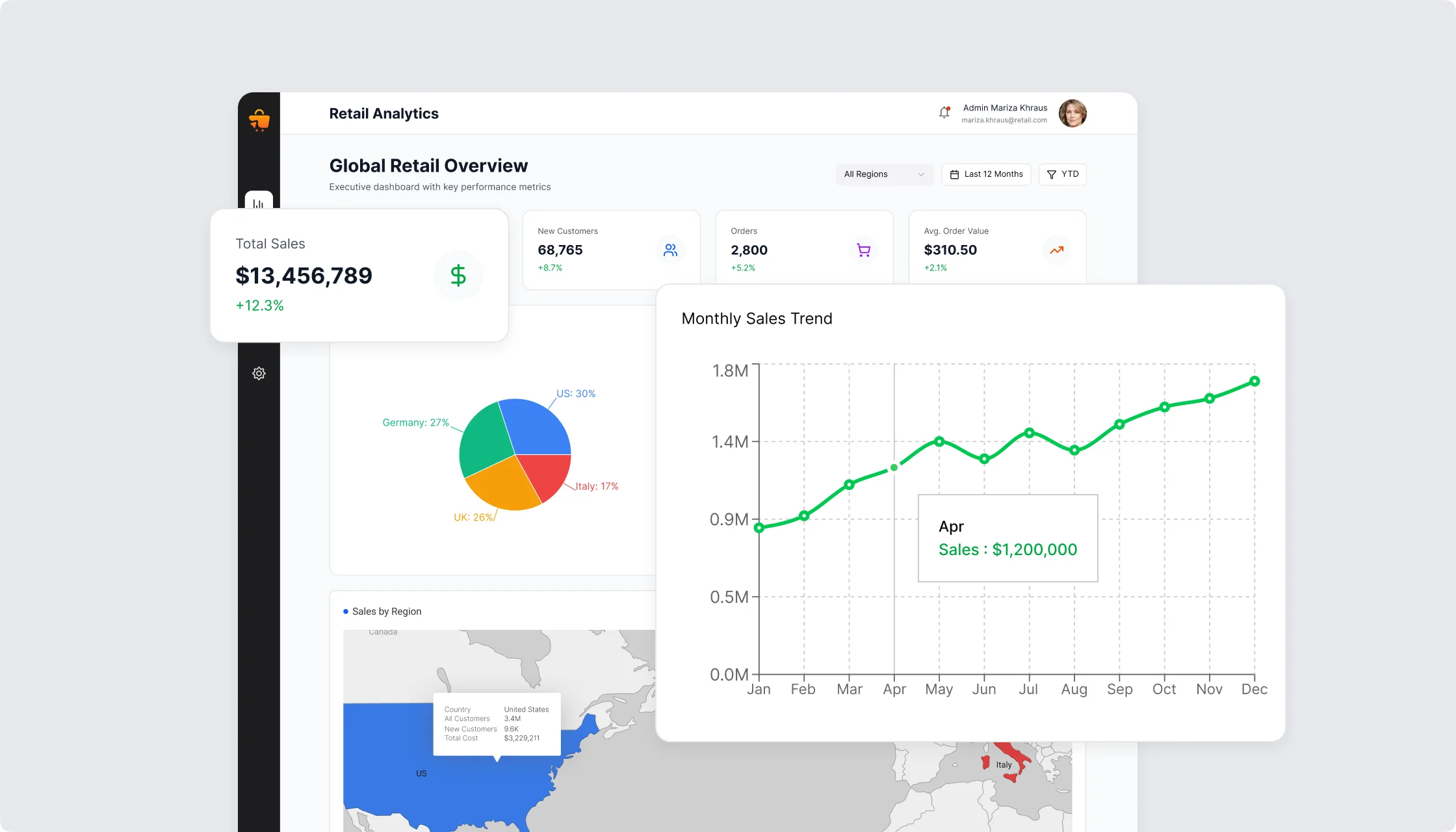
Client & Background
Our client is one of the largest players in the global retail market, operating hundreds of stores across North America, Europe, Asia, and other regions.
Over its 30-year history, the company experienced rapid growth and expansion. As it expanded beyond the U.S., it gradually established local management offices. Each of these offices made independent software implementation decisions without centralized oversight. While this decentralized management facilitated quick growth, it also led to a significant problem: analytics fragmentation. Reporting was often conducted in disparate systems, preventing a cohesive view for the head office.
Consequently, the existing infrastructure and human factors hindered the attainment of a unified, real-time understanding of business operations and customers. This could lead to inaccuracies and errors, delays in critical decision-making, increased operational costs, and missed revenue opportunities. Recognizing these systemic limitations, which constrained further growth and efficiency, necessitated the search for a strategic technology partner capable of offering a comprehensive solution for data unification and analytical process transformation. Emerline became that partner.
Challenge
Emerline, acting as a technology partner, began with a comprehensive audit of the client's IT infrastructure and operational processes. This deep dive allowed us to identify and precisely define the key challenges hindering effective analytics.
At this stage, we established the following:
Lack of a unified data strategy
Operational inefficiency and manual processes
Data fragmentation
Inventory and supply chain management issues
Methodology
To overcome the identified challenges, Emerline applied a hybrid Agile approach, combining Scrum principles for iterative development and flexibility with Waterfall elements for strategic planning and key phase management. Our digital transformation approach included:
Solution
The implemented solution is a unified and scalable cloud analytics platform, developed on Microsoft Power BI and tightly integrated with the extensive Microsoft Azure ecosystem.
The choice of Microsoft Power BI and Azure is driven by their unique synergy. Deep native integration ensures seamless operation with all Azure services for scalable processing of petabytes of data, guaranteeing unparalleled performance, which is critical for an international retail chain. Power BI is the central tool for intuitive visualization and self-service analytics, making data accessible for real-time decision-making. Combined with AI/ML capabilities for predictive analytics and Azure's enterprise-grade security, this synergy forms a comprehensive, resilient, and intelligent cloud platform, ideally suited for the dynamic needs of retail.
Key components of the solution included:
Unified analytics platform (Power BI on Azure)
The core of the solution is a unified Power BI platform, built on the scalable and reliable Microsoft Azure ecosystem. It served as a central hub for data analysis and visualization, providing a holistic 360-degree view of the business and serving as the foundation for a unified data strategy, which was previously absent.

Enhanced data integration
We aggregated data from a multitude of disparate sources: ERP, POS, SCM, CRM systems, and e-commerce data, using advanced ETL/ELT tools. For specific and complex systems, integration via custom APIs was implemented, which allowed us to eliminate information silos and create a "single source of truth," directly addressing the problem of data fragmentation.
Data governance system
Clear Data Governance frameworks were developed and implemented, defining rules for data ownership, quality standards, and access policies. This laid the foundation for reliable and transparent data management, directly compensating for the lack of a unified strategy and poor data quality.
Interactive dashboards
Customizable Power BI dashboards were developed, providing instant visibility into key KPIs in real-time. These dashboards covered areas such as sales, inventory, supply chain performance, and store operations, enabling users to deeply analyze and visualize data, which directly resolved the problem of delayed decision-making and the absence of operational analytics.
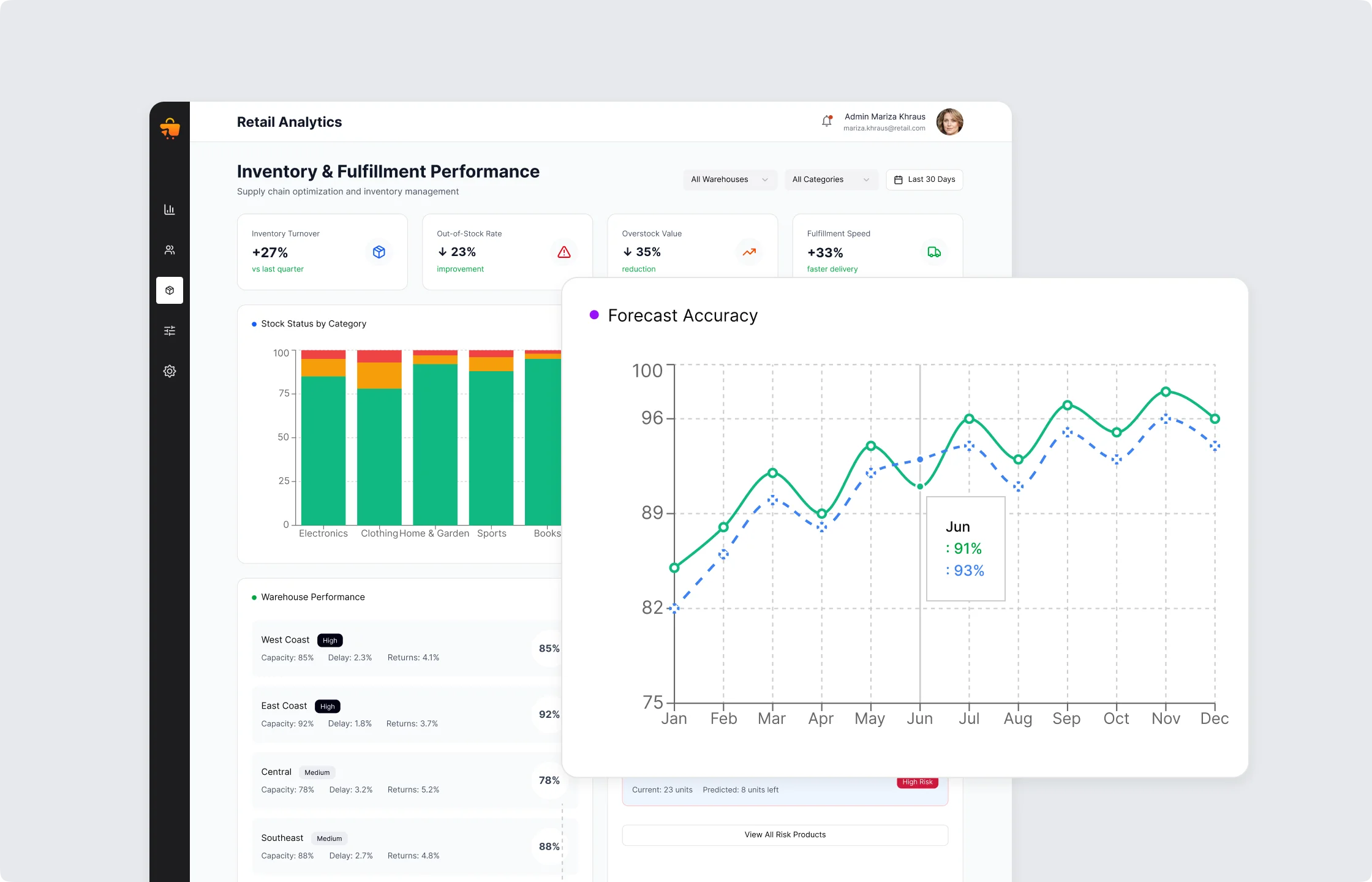
AI/ML models
The solution actively leveraged Artificial Intelligence (AI) and Machine Learning (ML) capabilities, integrated through Azure Machine Learning and Azure Databricks, to implement:
- Accurate demand forecasting
Optimizing inventory levels and reducing stockouts based on analysis of historical data, seasonal trends, and external factors, effectively solving chronic out-of-stock and overstocking issues.
- Offer personalization
Analyzing customer preferences and behavior to generate highly relevant product recommendations and personalized marketing campaigns.
- Supply chain optimization
Improving logistics, forecasting potential disruptions, and enhancing supplier efficiency, thereby eliminating bottlenecks and increasing overall supply chain effectiveness.
- Proactive loss prevention
AI-driven anomaly detection, integration of POS data with video analytics to identify high-risk transactions, and optimization of store layouts to reduce shrinkage, which significantly lowered operational costs and minimized human factor impact.
Self-service analytics capabilities
Power BI became a key tool for empowering business users with analytics, providing them intuitive means to create and analyze reports independently. This reduced reliance on the IT department and accelerated insights, minimizing manual processes and enhancing overall operational efficiency.
Technology Stack
The solution was built on a comprehensive Microsoft technology stack, ensuring scalability, security, and deep integration:
Results
The implementation of the Power BI and Azure platform not only successfully resolved all identified issues but also achieved key strategic goals by providing a unified, real-time business view, enhancing overall efficiency, and optimizing the entire supply chain.
- Data fragmentation eliminated and unified strategy established
Thanks to enhanced data integration and the implementation of Data Governance frameworks, data fragmentation was completely eliminated, creating a "single source of truth." A holistic 360-degree view of the business, previously unattainable, was achieved, laying the foundation for a unified data strategy.
- Operational efficiency increased and manual processes minimized
Automation of reporting and self-service analytics reduced reporting cycles by 80% (from days to minutes/hours) and decreased sales data processing and error handling time by 50%. Overall operational efficiency increased by 15%, minimizing manual operations and associated risks.
- Inventory and supply chain management optimized
Through the implementation of AI/ML for demand forecasting, forecasting accuracy increased by 15%, out-of-stock situations were reduced by 23%, and overstocking was cut by 35%. Inventory turnover improved by 27%, supply chain efficiency grew by 33%, and reaction to discrepancies was accelerated by 41%.
- Losses reduced and profitability increased
AI-driven loss prevention significantly reduced shrinkage and improved store operations efficiency, leading to an annual reduction in losses of $4 million. A 2.5% increase in operating profit was achieved, and inventory storage costs were reduced by 18%, along with logistics (by 28%) and transportation (by 15%) costs.
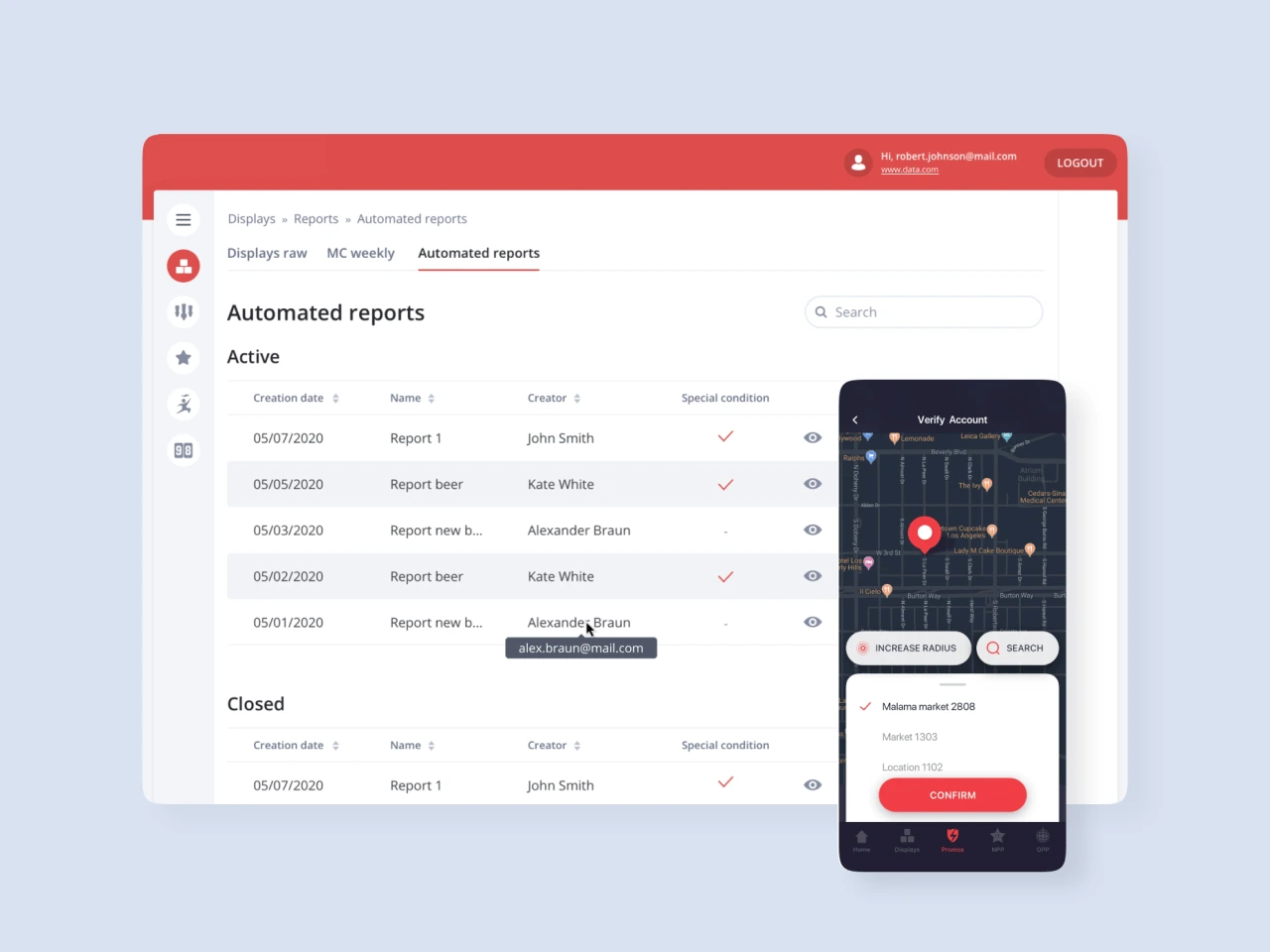
The development of an extensive sales analytics platform with a variety of modules aimed at facilitating the work of distributors and maximizing their performance.
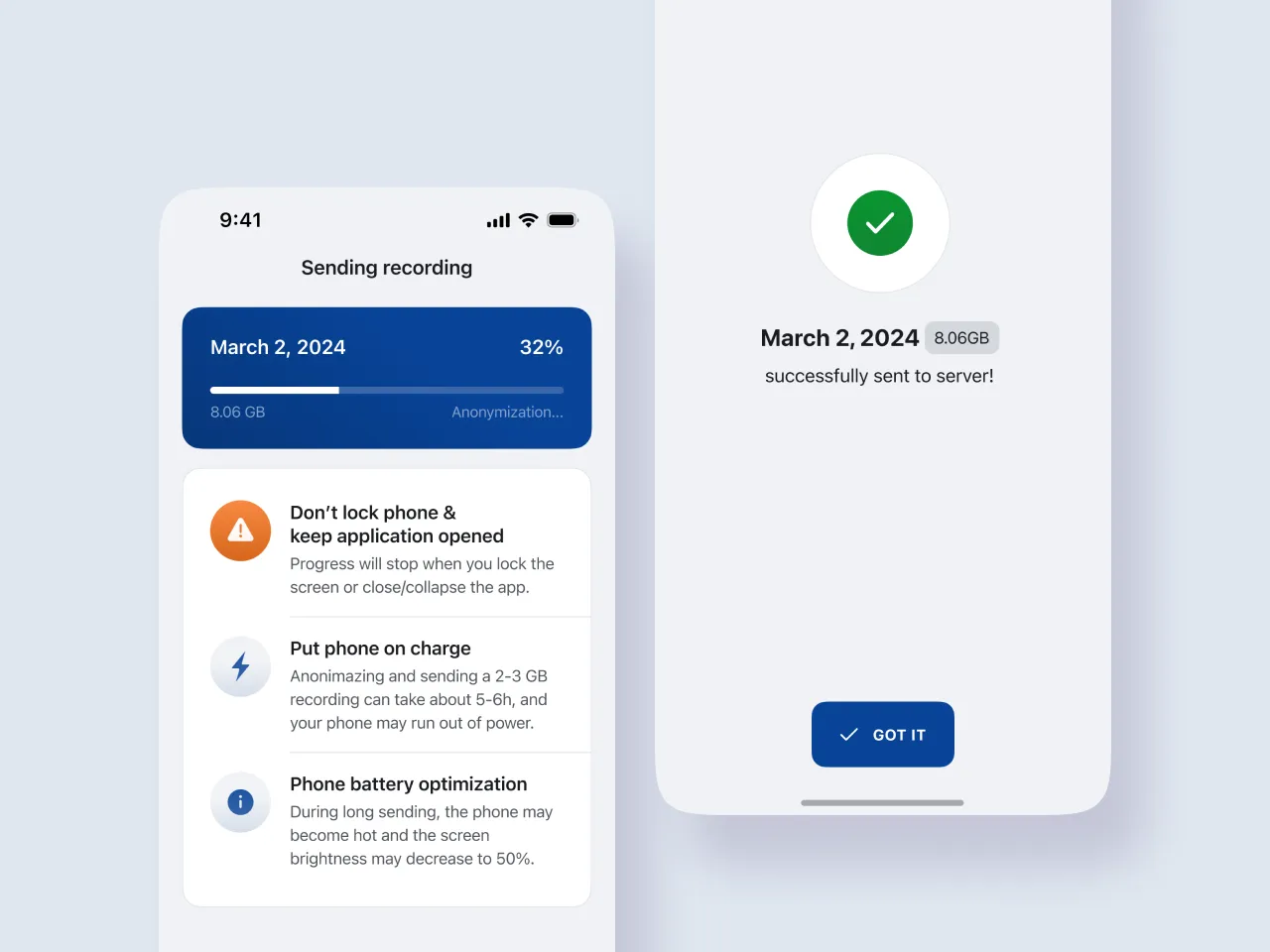
Advanced AI-powered iOS Application Integrated with Innovative Health Tech Software Platform
